Peers around the world: Thailand’s innovation-driven community at the heart of Southeast Asia
/2023_11_30_Suwipa_peers_2.jpg)
In our continuing "Peers Around the World" series, where we speak with global leaders in innovation spaces, we sit down with former IASP Asia Pacific Division President Suwipa Wanasathop, who tells us about her carreer, innovation at Thailand Science Park, and the IASP Asia Pacific community.
Tell us a bit about Thailand Science Park, your time as a director and how you were introduced to IASP.
Thailand Science Park has been the first and largest fully integrated R&D hub in the country since its establishment in 2002. It is now the home to 5 national research centres and about 120 local and international companies and startups. With over 3,000 R&D professionals working there, our Park is where innovation and innovation-driven entrepreneurs grow.
During my tenure as Director from 2017-2022, tech startups were starting to be our nation’s new engine of growth. Many initiatives and support programmes encourage spin-offs, R&D commercialisation as well as incubating and accelerating tech startups. The second phase Innovation Cluster was recently completed with world-class R&D infrastructure, with the aim for it to be a comprehensive ecosystem where corporate and national challenges are tackled via science, technology and innovation, especially for the Health & Wellness, Food, Agriculture, and Digital industry sectors. International collaboration and global connectivity in the technical market and funding aspects have been strengthened to make our ecosystem complete and vibrant. About one-third of our clients were international firms.
I have known the IASP network since the year 2000 when I first joined the National Science and Technology Development Agency and ran Software Park Thailand, a specialized Science Park focusing on building strong software and a digital industry cluster. Later when Thailand Science Park hosted the IASP Asia Pacific Conference 2012, I got to know IASP, Luis, Ebba and other IASP members much better.
You followed Chachanat Thebtaranonth as the second female leader at Thailand Science Park. What did you learn from her and her tenure? Have you continued her legacy in any way? [Chachanat Thebtaranonth was also IASP Asia Pacific Division President from 2003-2006 and IASP International President 2006-2008]
Dr. Chachanat was the first Director of Thailand Science Park and fifteen years later I followed as the seventh. She laid a good foundation and set a great example in international collaboration. I still remember that during my tenure as Director of Software Park Thailand I was inspired by her role as the first female President of IASP.
Her active engagement in the learning and sharing with our IASP community is highly appreciated. Her legacy prevails as all her successors also led our Park with a strong emphasis in partnership development, while continuously improving and innovating. I carried out the mission she started.
I was honoured to serve as the second President of the Thai Business Incubators and Science Parks Association (ThaiBISPA) of which she was one of the three founding members. I’ve continued to add value so that the Association could be a true ecosystem integrator that plays an important role in capacity building, networking, strengthening the management of science parks, as well as providing policy inputs to government and industry at large.
I have come to appreciate Dr. Chachanat’s vision in driving economic growth through different S&T innovation mechanisms. Thanks to the building blocks she left behind, including setting the foundation to strengthen the role of Angel Investors in deep tech ventures in Thailand, we were able to establish the alternative funding and mentorship programme Thai Business Angel Forum (TBAN), set up after connecting with the World Business Angel Forum and training over 100 local business angels.
Thailand had the largest delegation at the IASP World Conference in Luxembourg. What were the biggest take-aways for the Thai delegation?
We always have a big delegation from Thailand to the IASP World Conference since we see the enormous value of networking and knowledge sharing at this annual event. Thailand is investing in setting up Science Parks for regional development; therefore, both the management and the team of those new Parks not only connect with peers, board members, and policy makers in the delegation but also learn from IASP international peers from around the world. The key take-aways are to ask questions and delve deep into the topics, to see things from different perspectives, and to understand and adapt our direction to prepare for the mega-trends that shape our future industry. We left with good food for thought and examples of initiatives to take into consideration when implementing our own strategies.
What does Thailand’s innovation community do to help new entrepreneurs? What role does Thailand Science Park play in this?
We deliver value to our tenants, and partnership is the key. We are not just a landlord, but act as an accelerated platform for open innovation with a multi-faceted network, extensive knowledge, with international connections that enable our team to create high value-added services for our clients. Having our trusted partners like IASP and via other bi-lateral collaborations we can help reduce the risks, shorten their time to market, create new synergies, as well as leads to new market opportunities for our innovation-driven entrepreneurs.
What, in your view, are the most exciting trends in Thailand's STPs and AOIs right now?
The role of STPs and AOIs as innovation intermediaries to connect the dots and serve as a crucial platform for an innovation-driven community is now the trend in converting science into wealth.
Thailand is located in the heart of Southeast Asia, connecting to the Greater Mekong subregion and Malaysia in the South. With the Thailand 4.0 policy, the government is aiming to modernise Thailand to a value-based economy and a knowledge-based society, with priorities given to innovation and sustainability.
We are utilising our comparative advantages such as biodiversity and cultural diversity to raise the competitiveness of our economy. Our strengths lie in food and agriculture as well as service sectors. Our clusters for innovation and startups serve as a growth engine to foster a transformative shift to high value product and services.
What have you learned about keeping an innovation community successful and growing?
Connectivity, partnerships, and trust in the ecosystem (both local and global) definitely stimulate open innovation, which is the key enabler for successful innovation-driven and deep-tech entrepreneurs. Different activities such as knowledge sharing, multi-lateral trade visits, research and innovation matchmaking, and business connections to strengthen innovation-driven enterprises are conducted extensively at our Park, online and in person. We redesign our own model of growth so that this open innovation network leads unbounded opportunities for our resident companies to co-create new solutions that can lead to new revenue generation.
You handed over the Asia Pacific Division Presidency to Tom Bentley at the IASP Asia Pacific Division conference celebrated in Daedeok (South Korea) earlier this month. What’s the highlight for you from your term as President of the division?
I was grateful that the Korea Innovation Foundation INNOPOLIS hosted our IASP Asia Pacific Conference in South Korea as the first in-person event of the division after the long pandemic. At the conference, we reunited with key players in the region and expanded our connections by meeting new ones.
During my term, it was challenging for us to keep the spirit of international networking active due to the pandemic. However, our members have continued to collaborate via online and hybrid formats through co-acceleration programmes, soft-landing missions and knowledge sharing events. I feel that regional connectivity is our way forward to add value to our companies and to create high impact and sustainable value for the organisation and society at large. The IASP global connections can serve as a platform for us to collaborate more in co-creating new solutions, grasping new opportunities, expanding business cross-borders, as well as building a vibrant ecosystem to nurture innovation-driven entrepreneurs.

.jpg)
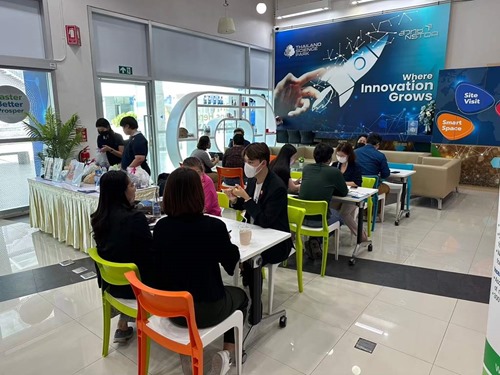
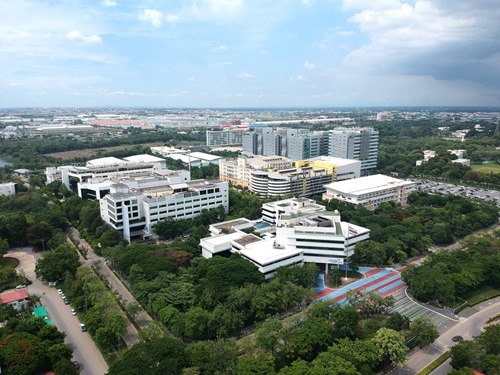
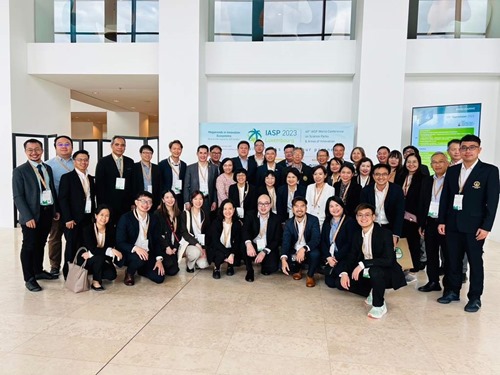
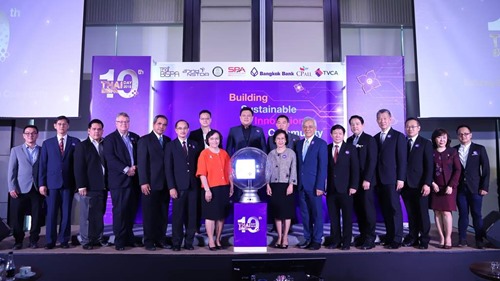
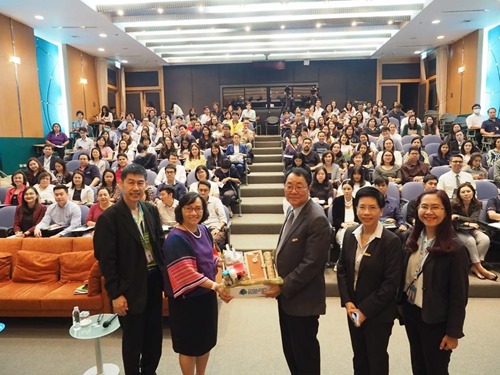
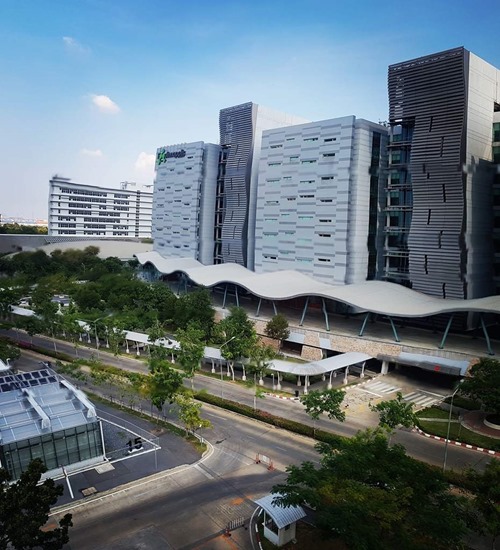

/)

/canvascolor(0xffffffff)/Identificador_Visual.png)
/canvascolor(0xffffffff)/MemberLogo-5823-6309.png)
/canvascolor(0xffffffff)/2017_06_19_South_Africa_The_Innovation_Hub.emf.jpg)
/canvascolor(0xffffffff)/Logo_ZEDE_Color_1.jpg)
/canvascolor(0xffffffff)/2017_07_31_tecnopuc.png)
/canvascolor(0xffffffff)/MemberLogo-19705-6247.png)
/canvascolor(0xffffffff)/2017_11_13_UK_Coventry_Science_Park.jpg)
/canvascolor(0xffffffff)/MemberLogo-5506-5906.jpg)
/canvascolor(0xffffffff)/2021_09_20_Thailand_STP_Chiang_Mai_University.jpg)
/canvascolor(0xffffffff)/MemberLogo-43501-149701.jpg)
/canvascolor(0xffffffff)/2018_01_24_Italy_Kilometro_Rosso.png)
/canvascolor(0xffffffff)/11_36.png)
/canvascolor(0xffffffff)/2017_10_23_Iran_Manzadaran_STP.png)
/canvascolor(0xffffffff)/2023_07_14_Saudi_Arabia_LAB7_Aramco.png)
/canvascolor(0xffffffff)/logo-scipark_2.png)
/canvascolor(0xffffffff)/2017_07_31_University_of_Iceland.jpg)
/canvascolor(0xffffffff)/Norwich_Research_Park_Logo_artwork_transparent_bg_4.png)
/canvascolor(0xffffffff)/gcid-logo_logo-colour_for_web_with_20__2.jpg)
/canvascolor(0xffffffff)/MemberLogo-5650-6079.jpg)
/canvascolor(0xffffffff)/BV_Logo_HS_1.png)
/canvascolor(0xffffffff)/2017_11_21_UK_Univ_of_Warwick_SP.jpg)
/canvascolor(0xffffffff)/2020_06_29_Sweden_Link_ping_SP.jpg)
/canvascolor(0xffffffff)/Korea_Innovation_Foundation.png)
/canvascolor(0xffffffff)/2024_09_26_Thailand_Northeastern_2.jpg)
/canvascolor(0xffffffff)/2023_01_20_David_Johnston_RTP.jpg)
